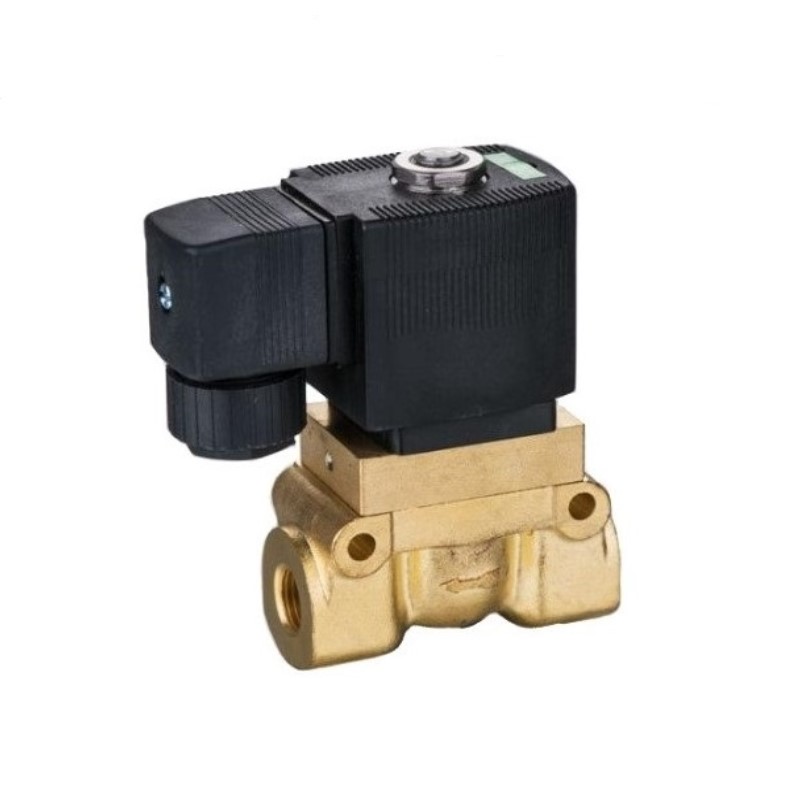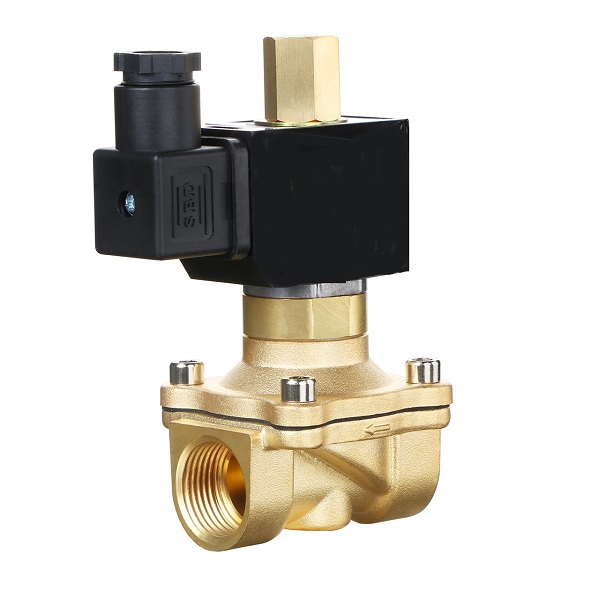Solenoid valves are electromechanically operated valves that use a solenoid to control the flow of fluid or gas. They work by using a solenoid to open or close a valve, allowing or blocking the flow of air through a pneumatic circuit.
Solenoid valves are generally used to manage the flow and direction of the system. They consist of a spool attached to a ferrous metal plunger that is usually centered by a spring.
The plunger moves within a non-ferrous metal core tube that is surrounded by a coil valve of electrical windings. The solenoid valve voltage can vary from 12-48V DC to 110-220V AC. Upon charging the coil with electricity, a magnetic field arises that propels or draws the plunger.
When are They Used?
Solenoids are used in a wide range of applications, including controlling the flow of fluid in hydraulic systems, the air in pneumatic systems, and gas in automotive systems.
In pneumatic systems, pneumatic valves are used for a variety of functions, such as controlling the direction and flow rate of air to pneumatic actuators.
What are Pneumatic Solenoid Valves?
Solenoid valves are a key component in many pneumatic systems, providing reliable and efficient control over the flow of air or gasses. They are used in a wide variety of applications, such as manufacturing processes and automotive systems.
They can be normally open or normally closed.
- Normally Open:
When a normally open valve is not energized, it remains open. The valve is closed when the solenoid is activated. This type of valve is suitable for systems that require constant air or gas flow, even during power outages.
- Normally Closed:
On the other hand, normally closed valves are closed when they are not energized. The valve opens when power is supplied to the solenoid.
Benefits of Solenoid Valves
Here are some basic features and advantages of these types of valves:
- Minimal pressure drop
- Money-saving
- Effective operation
- Reliability
- Durability
- Compact design
How to Replace a Solenoid Valve Coil?
Whenever the solenoid valve coil is damaged and causes the solenoid valve to not work properly or stop operating, it means that it’s time to replace the valve coils. The replacement of pneumatic coils is a requirement for the high performance of your pneumatic systems.
Here are some tips on what to consider while choosing and replacing the right pneumatic coil.
- Dimensions – You must compare the dimensions of your replacement valve coil, like the diameter (D) and height (H). The diameter and height of the replacement valve coil should correspond to the original one.
- Voltages and Current Type – Choose the right current type and voltages for your valve coils. There are two major types of current – AC and DC. AC stands for Alternating Current, in which electric charge flows in various directions, switching back and forth periodically. Direct Current (DC) is another type of electrical current that flows only in one direction. And there are various voltages, 12V DC, 24V DC, 24V AC, 110V, 220V AC.
- Connector – Determine the type of connector that solenoid valve coils have, which is mostly a DIN connector. The latter has many advantages, including quick connection, fast coil exchange, great insulation, etc. The most common types of these connectors are DIN43650-A and DIN43650-B.
- Installation – Detach the electrical supply, unscrew the top nut, and remove the O-ring. Before installing, carefully read the safety instructions. Remove the coil and replace it with a new one, making sure that the new O-ring is in place. Tighten the cap nut and rewire the connector.
Make sure to replace solenoid coils as they wear out. If you need any guidance in choosing the replacement solenoid coils for pneumatic control valves, you can opt for HAK Fluid Power Equipment LTD, based in Toronto, Canada.
Sometimes, it’s challenging to understand which type of valve will fit your needs because there are many types available on the market. If you need any help making an efficient purchase without regretting it later, opt for HAK Fluid Power Equipment LTD, based in Toronto, Canada.
-

2 Way 2 Position N/C Brass Body High Temperature / Pressure SOLENOID VALVE (1)
-

2 Way 2 Position N/C Pneumatic Aluminum Electric Solenoid Valve. (2)
-

2 Way 2 Position N/C Pneumatic Brass Body Electric Solenoid Valve. (8)
-

2 Way 2 Position N/C Pneumatic Stainless Steel Body Electric Solenoid Valve (6)
-

2 Way 2 Position Normally Open Pneumatic Brass Body Electric Solenoid Valve. (4)
-

Electric Auto Drain (1)
-

ELECTRIC SOLENOID VALVE TIMER (1)
-

HAK Pneumatic Solenoid Valve 2W Series Replacement Coils (2)
-

HAK Pneumatic Solenoid Valve Replacement Coils (2)
-

VXF SERIES 2 WAY / 2 Port Aluminum Solenoid Valve For Dust Collector (2)










